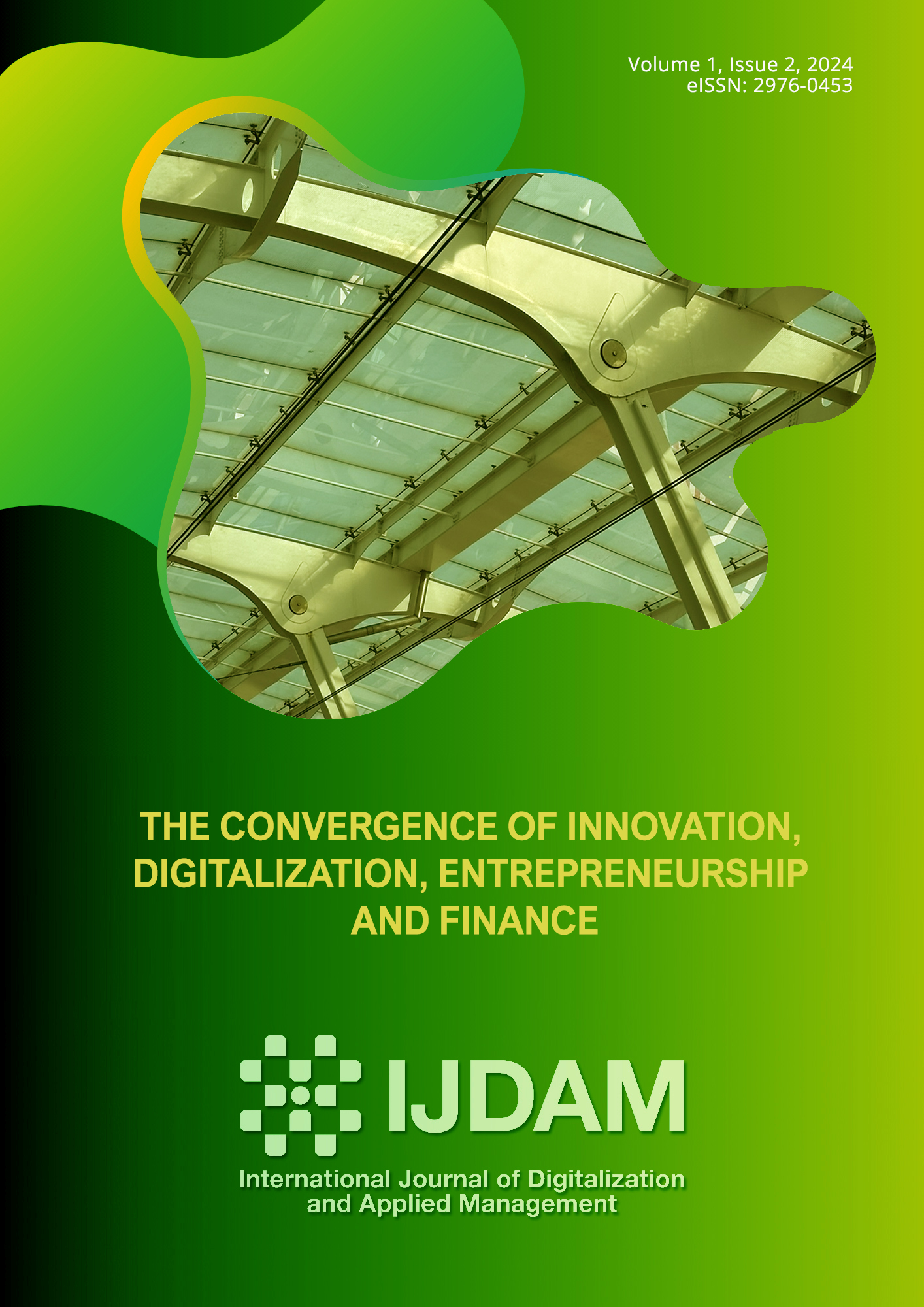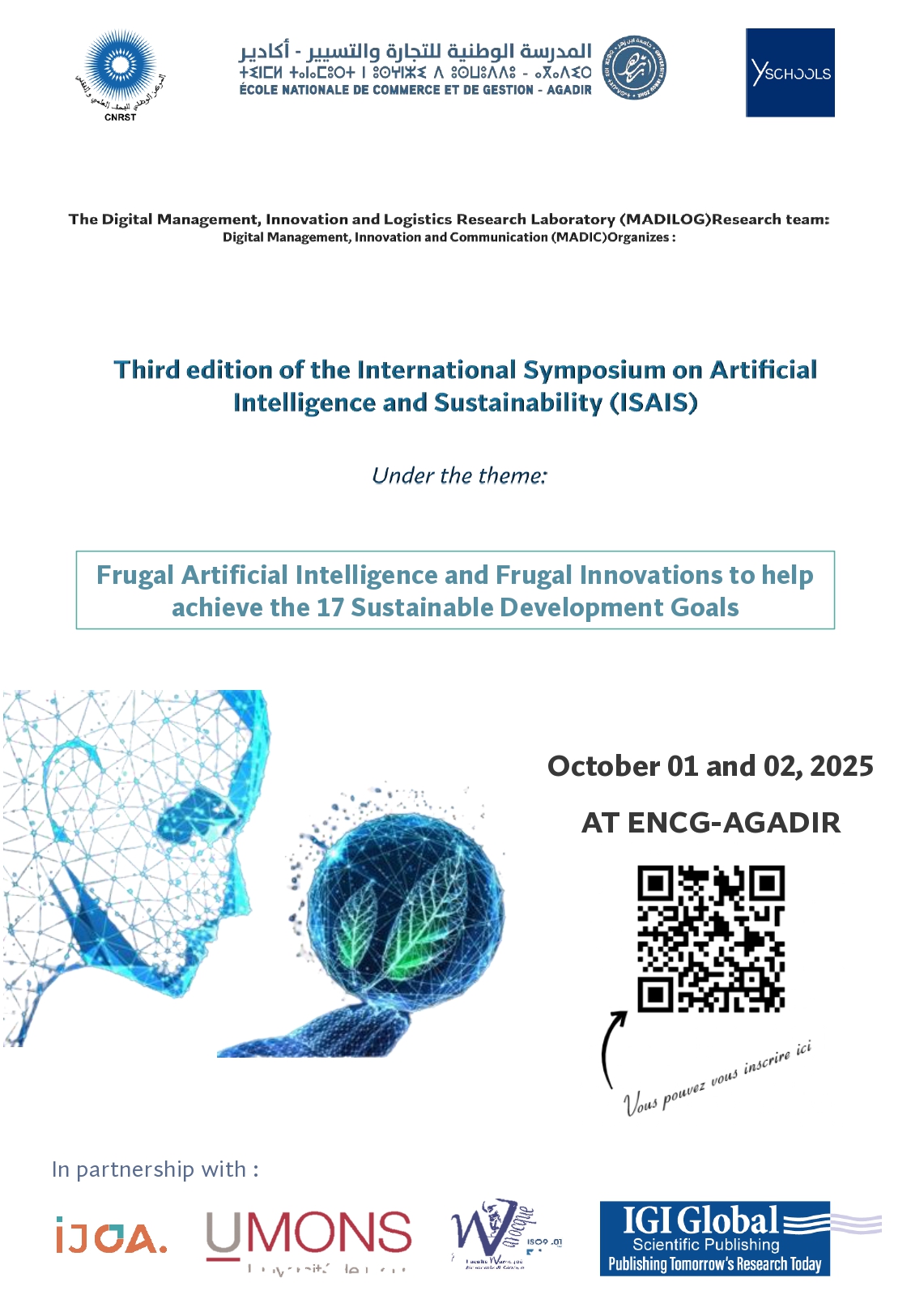Financial inclusion, FinTech and financial literacy as catalysts for young people's economic inclusion
A bibliometric analysis
DOI:
https://doi.org/10.23882/ijdam.24136Keywords:
Financial inclusion ; , Fintech;, ; Youth ;, Financial literacy ; , Economic integrationAbstract
The objective of this bibliometric literature review was to analyze the trends and findings of various recent research studies examining the role of financial inclusion through Fintech and financial literacy in enhancing the economic inclusion of young people. We processed 124 documents extracted from the Scopus 2024 database. The results indicate that our subject has garnered significant attention in recent years, as financial inclusion, Fintech, and financial literacy have been identified as key determinants of youth integration into the labor market, particularly through entrepreneurship. Therefore, policymakers should consider these factors when developing their strategies, placing greater emphasis on disadvantaged youth, young women, and those with lower levels of education. However, other factors, such as political stability, economic conditions, and country-specific characteristics, also appear to have significant impacts. Future research could continue to explore and conduct practical investigations on this topic to provide quantified results on this issue.
References
Ahmad, I., Alni, R., & Arni, S. (2023). Financial Literacy to Improve Sustainability: A Bibliometric Analysis. Studies in Business and Economics, 18(3), 24-43.
Aslan, G. (2022). Enhancing youth and women’s financial inclusion in South Asia. Cogent Economics & Finance, 10(1), 2136237.
Berguiga, I., & Adair, P. (2023, November). Determinants of Youth Financial Inclusion in MENA Countries: Account Holding versus Fintech Use. In 2023 IEEE International Conference on Advances in Data-Driven Analytics And Intelligent Systems (ADACIS) (pp. 1-7). IEEE.
Berzin, S. C., Lee, H., & Leong, A. D. (2018). Social entrepreneurship as intervention: Findings from a venture development program for marginalized youth. Child & Youth Services, 39(4), 211-227.
Bharucha, J. P. (2017). Socio-economic and demographic determinants of indian youth financial literacy: Determinants of financial literacy. International Journal of Asian Business and Information Management (IJABIM), 8(4), 15-28.
BILAL, M. A., KHAN, H. H., IRFAN, M., Ul Haq, S. M., ALI, M., KAKAR, A., ... & RAUF, A. (2021). Influence of financial literacy and educational skills on entrepreneurial intent: empirical evidence from young entrepreneurs of Pakistan. The Journal of Asian Finance, Economics and Business, 8(1), 697-710.
Black, S. E., & Strahan, P. E. (2002). Entrepreneurship and bank credit availability. The Journal of Finance, 57(6), 2807-2833.
Bruhn, M., & Zia, B. (2013). Stimulating managerial capital in emerging markets: The impact of business training for young entrepreneurs. Journal of Development Effectiveness, 5(2), 232-266.
Bulani, J., Adebayo, J., & Matsilele, T. (2023). The Role of Community Radio in Youth Empowerment: A Case Study of Bush Radio. In 100 Years of Radio in South Africa, Volume 2: Community Radio, Digital Radio and the Future of Radio in South Africa (pp. 47-70). Cham: Springer Nature Switzerland.
Caplinska, A., & Ohotina, A. (2019). Analysis of financial literacy tendencies with young people. Entrepreneurship and Sustainability Issues, 6(4), 6.
Claessens, S., & Perotti, E. (2007). Finance and inequality: Channels and evidence. Journal of comparative Economics, 35(4), 748-773.
Cuervo, H., & Wyn, J. (2011). Rethinking youth transitions in Australia: A historical and multidimensional approach. Melbourne: Youth Research Centre, Melbourne Graduate School of Education, University of Melbourne.
Cull, M., & Whitton, D. (2011). University students’ financial literacy levels: Obstacles and aids. The Economic and Labour Relations Review, 22(1), 99-114.
Dale, M. C., Feng, F., & Vaithianathan, R. (2012). Microfinance in developed economies: A case study of the NILS programme in Australia and New Zealand. New Zealand Economic Papers, 46(3), 303-313.
Demirgüç-Kunt, A., Klapper, L. F., Singer, D., & Van Oudheusden, P. (2015). The global findex database 2014: Measuring financial inclusion around the world. World Bank Policy Research Working Paper, (7255).
Deng, S., & Meng, Y. (2013). Financial access and economic participation of youth with disabilities in China: an exploratory study. China journal of social work, 6(2), 177-189.
Di Nunzio, M. (2015). What is the alternative? Youth, entrepreneurship and the developmental state in urban Ethiopia. Development and Change, 46(5), 1179-1200.
Djelassi, M. (2024). Training services and repayment performance of micro-borrowers in Tunisia. Applied Economics, 56(17), 2008-2024.
Edewor, S. E., Kollie, G. B., & Olaoye, I. J. (2023). Conditions Driving Youth Employment in Key Sectors of the Nigerian Economy. Sustainability, 15(7), 6096.
Elouaourti, Z., & Ibourk, A. (2024a). Empowering African entrepreneurs: The crucial role of financial inclusion in mediating the relationship between contextual factors and entrepreneurial willingness. Emerging Markets Review, 101118.
Elouaourti, Z., & Ibourk, A. (2024b). Financial Technologies for All MENA citizens: Tackling barriers and promoting inclusion. Regional Science Policy & Practice, 100019.
Emmons, W. R., & Noeth, B. J. (2013). Economic vulnerability and financial fragility. Federal Reserve Bank of St. Louis Review, 95(5), 361-388.
Etheridge, R. M., Smith, J. C., Rounds-Bryant, J. L., & Hubbard, R. L. (2001). Drug abuse treatment and comprehensive services for adolescents. Journal of Adolescent Research, 16(6), 563-589.
Fiksenbaum, L., Marjanovic, Z., & Greenglass, E. (2017). Financial threat and individuals’ willingness to change financial behavior. Review of Behavioral Finance, 9(2), 128-147.
Freeman, R. B., & Wise, D. A. (1982). The youth labor market problem: its nature causes and consequences. In The youth labor market problem: Its nature, causes, and consequences (pp. 1-16). University of Chicago Press.
Fungácová, Z., & Weill, L. (2014). Understanding financial inclusion in China. BOFIT Discussion Papers, 2014(10), 1.
Gloukoviezoff, G. (2007). From financial exclusion to overindebtedness: the paradox of difficulties for people on low incomes?. In New frontiers in banking services: Emerging needs and tailored products for untapped markets (pp. 213-245). Berlin, Heidelberg: Springer Berlin Heidelberg.
Grimes, P. W., Lopus, J. S., & Amidjono, D. S. (2022). Financial life-skills training and labor market outcomes in Indonesia. International Review of Economics Education, 41, 100255.
Grzeslo, J. (2019, January). M-Pesa adoption and usage: a qualitative study of young Kenyan entrepreneurs. In Proceedings of the Tenth International Conference on Information and Commu
Hanckel, B., & Ann Hendry, N. (2024). Young adults and investing for the future: Examining futuring practices and wellbeing through digital brokerage platforms. The Sociological Review, 00380261241236255.
Harley, J. G., Sadoq, A., Saoudi, K., Katerberg, L., & Denomy, J. (2010). YouthInvest: A case study of savings behaviour as an indicator of change through experiential learning. Enterprise development & microfinance, (4), 293-306.
Hassija, T., Watts, S., & Goel, M. Fintech Startups Challenges and Suggested Strategies to Overcome. In Revolutionary Challenges and Opportunities of Fintech (pp. 71-89). Apple Academic Press.
Hossein, C., Redfern, J., & Carothers, R. (2006). An Egyptian case study: financial services for young people who work. International Journal of Emerging Markets, 1(4), 329-340.
Hu, C., Chong, C., Kang, Y., Li, Y., & Chen, Y. (2023, April). Financial Decision Buddy: A Decision-support Tool to Bridge the Gaps in Financial Education. In Extended Abstracts of the 2023 CHI Conference on Human Factors in Computing Systems (pp. 1-5).
Huston, S. J. (2010). Measuring financial literacy. Journal of consumer affairs, 44(2), 296-316.
Ichwan, I., & Kasri, R. A. (2019). Why are youth intent on investing through peer to peer lending? Evidence from Indonesia. Journal of Islamic Monetary Economics and Finance, 5(4), 741-762.
Jebarajakirthy, C., & Lobo, A. C. (2014). War affected youth as consumers of microcredit: An application and extension of the theory of planned behaviour. Journal of retailing and consumer services, 21(3), 239-248.
Khan, Z., Patel, L., Graham, L., Burger, R., Chowa, G. A., & Masa, R. (2024). Youth Employability programmes in South Africa: Which features work best and for whom?. Development Southern Africa, 41(1), 207-224.
Kojo Oseifuah, E. (2010). Financial literacy and youth entrepreneurship in South Africa. African journal of Economic and management studies, 1(2), 164-182.
Koloma, Y. (2021). Financial inclusion and entrepreneurship willingness of youth: Evidence from Mali. African Development Review, 33(2), 263-275.
Koomson, I., Martey, E., & Etwire, P. M. (2023). Mobile money and entrepreneurship in East Africa: The mediating roles of digital savings and access to digital credit. Information Technology & People, 36(3), 996-1019.
Loke, V., Choi, L., & Libby, M. (2015). Increasing youth financial capability: An evaluation of the MyPath savings initiative. Journal of Consumer Affairs, 49(1), 97-126.
Lyons, A., & Contreras, S. (2017). A simultaneous model of youth entrepreneurship and financial inclusion across developing countries. Available at SSRN 3053615.
Marlow, S., & Patton, D. (2005). All credit to men? Entrepreneurship, finance, and gender. Entrepreneurship theory and practice, 29(6), 717-735.
McVay, M. P., Yamamoto, G., Ndoka, E., Strong, T., Coulson, L., & Awuah, L. B. (2022). Agricultural finance that reaches people facing poverty, gender, and age barriers. Enterprise Development & Microfinance, 33(1).
Mhando, F., Dovel, K., Jennings Mayo-Wilson, L., Rwehumbiza, D., Thompson, N., Nwaozuru, U., ... & Conserve, D. F. (2020). Microfinance and peer health leadership intervention implementation for men in Dar es Salaam, Tanzania: A qualitative assessment of perceived economic and health outcomes. American Journal of Men's Health, 14(4), 1557988320936892.
Moghavvemi, S., & Muniandy, D. (2021). The Effect of Early Age Involvement to Individuals' Financial Literacy and Financial Well-Being: Impact of COVID-19 on Economic Well-Being. In Handbook of Research on Reinventing Economies and Organizations Following a Global Health Crisis (pp. 164-180). IGI Global.
Mohammed Shuker, F., & Hashim Sadik, H. (2024). A critical review on rural youth unemployment in Ethiopia. International Journal of Adolescence and Youth, 29(1), 2322564.
Mpofu, F. Y., & Mhlanga, D. (2022). Digital financial inclusion, digital financial services tax and financial inclusion in the fourth industrial revolution era in africa. Economies, 10(8), 184.
Mulume Bonnke, S., Dontsop Nguezet, P. M., Nyamugira Biringanine, A., Jean-Jacques, M. S., Manyong, V., & Bamba, Z. (2022). Farmers’ credit access in the Democratic Republic of Congo: Empirical evidence from youth tomato farmers in Ruzizi plain in South Kivu. Cogent Economics & Finance, 10(1), 2071386.
Ng, Y. S. E., Muthukannan, P., Tan, B., & Leong, C. (2017). Fintech platform development: A revelatory case study of a Chinese microloan startup.
Noctor, M., Stoney, S., & Stradling, R. (1992). Financial literacy: a discussion of concepts and competences of financial literacy and opportunities for its introduction into young people’s learning. National Foundation for Educational Research.
Onyekwere, E., Ogwueleka, F. N., & Irhebhude, M. E. (2023). Adoption and sustainability of bitcoin and the blockchain technology in Nigeria. International Journal of Information Technology, 15(5), 2793-2804.
Orbanova, D., & Velichova, L'udmila. (2013). Importance of entrepreneurship and financial literacy in the socio-economic progress and personal growth of young people in the Slovak Republic. Sociológia, 45(5), 470-488.
Raifu, I. A., Kumeka, T. T., & Aminu, A. (2024). Financial development and unemployment in MENA: evidence from heterogeneous panel causality and quantile via moment regression. Journal of the Knowledge Economy, 15(1), 3512-3550.
Senou, M. M., & Manda, J. (2022). Access to finance and rural youth entrepreneurship in Benin: Is there a gender gap?. African Development Review, 34(1), 29-41.
Sesabo, J. K., & Mkuna, E. (2024). Welfare Impact of Mobile Financial Services Business Among Youth in Urban and Peri-urban Tanzania. Global Social Welfare, 1-14.
Shim, S., Barber, B. L., Card, N. A., Xiao, J. J., & Serido, J. (2010). Financial socialization of first-year college students: The roles of parents, work, and education. Journal of youth and adolescence, 39, 1457-1470.
Soumaré, I., Tchana, F. T., & Kengne, T. M. (2016). Analysis of the determinants of financial inclusion in Central and West Africa. Transnational Corporations Review, 8(4), 231-249.
Tejada-Peña E.; Mejía S.H.; Molchanova V.S.; García-Santillán A.(2023). Financial Literacy on High School Students. How is Their Performance if Study and Work?. European journal of contemporary
Tinta, A. A., Ouédraogo, I. M., & Al‐Hassan, R. M. (2022). The micro determinants of financial inclusion and financial resilience in Africa. African Development Review, 34(2), 293-306.
Unnikrishnan, V., Pinet, M., Marc, L., Boateng, N. A., Boateng, E. S., Pasanen, T., ... & Bridonneau, S. (2022). Impact of an integrated youth skill training program on youth livelihoods: A case study of cocoa belt region in Ghana. World Development, 151, 105732.
Van Rooij, M. C., Lusardi, A., & Alessie, R. J. (2011). Financial literacy a
Wilkinson, A., Pettifor, A., Rosenberg, M., Halpern, C. T., Thirumurthy, H., Collinson, M. A., & Kahn, K. (2017). The employment environment for youth in rural South Africa: A mixed-methods study. Development Southern Africa, 34(1), 17-32.
Williams, A. J., & Oumlil, B. (2015). College student financial capability: A framework for public policy, research and managerial action for financial exclusion prevention. International Journal of Bank Marketing, 33(5), 637-653.
Xu, Y., & Zhao, X. (2023). Financial market risk, technology and natural resources nexus: Evidence from China. Resources Policy, 81, 103332.
Aparicio, G., Iturralde, T., & Maseda, A. (2019). Conceptual structure and perspectives on entrepreneurship education research: A bibliometric review. European research on management and business economics, 25(3), 105-113.
Afjal, M. (2023). Bridging the financial divide: a bibliometric analysis on the role of digital financial services within FinTech in enhancing financial inclusion and economic development. Humanities and Social Sciences Communications, 10(1), 1-27.
Aria, M., & Cuccurullo, C. (2017). bibliometrix: An R-tool for comprehensive science mapping analysis. Journal of informetrics, 11(4), 959-975.
Sinclair, S. P. (2001). Financial exclusion: An introductory survey. CRSIS, Edinburgh College of Art/Heriot Watt University.
Stănescu, C. G., & Gikay, A. A. (Eds.). (2020). Discrimination, Vulnerable Consumers and Financial Inclusion: Fair Access to Financial Services and the Law. Routledge.
Downloads
Published
How to Cite
Issue
Section
License
Copyright (c) 2024 Jabrane AMAGHOUSS , Hanane ELMASMARI

This work is licensed under a Creative Commons Attribution-NonCommercial 4.0 International License.


 Portugal
Portugal









